It’s Time For A Change
My name is Kyla Gladney-Enos and in the previous blog, I talked about an interview I conducted about deep poverty. In this blog, I’ll be talking about how I’m going to make a change for my interviewee. This is the last main section of the You & The World project. I’m really excited to talk about what I’m going to make for the women I interviewed. I’m going to talk about my change and why I picked this change, but before I do that, I’m going to summarize the last two blog posts.
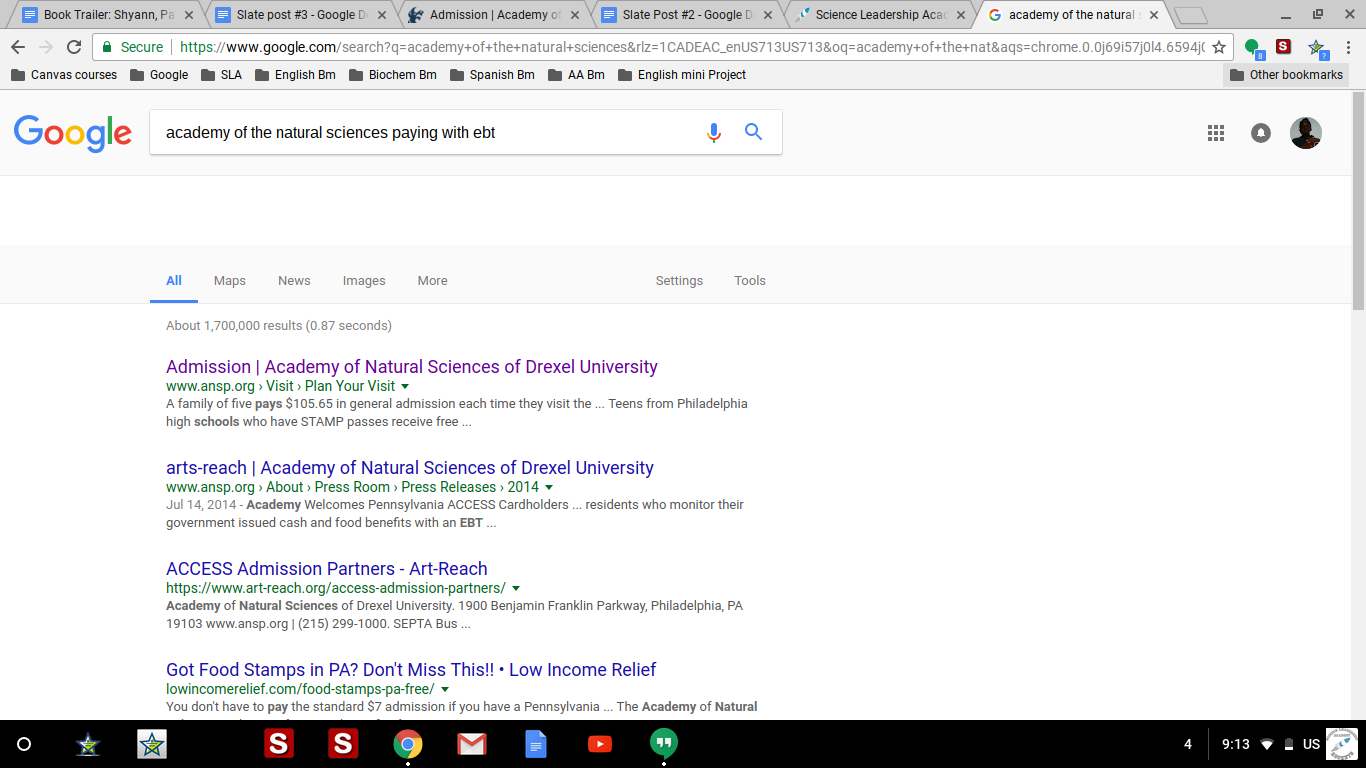
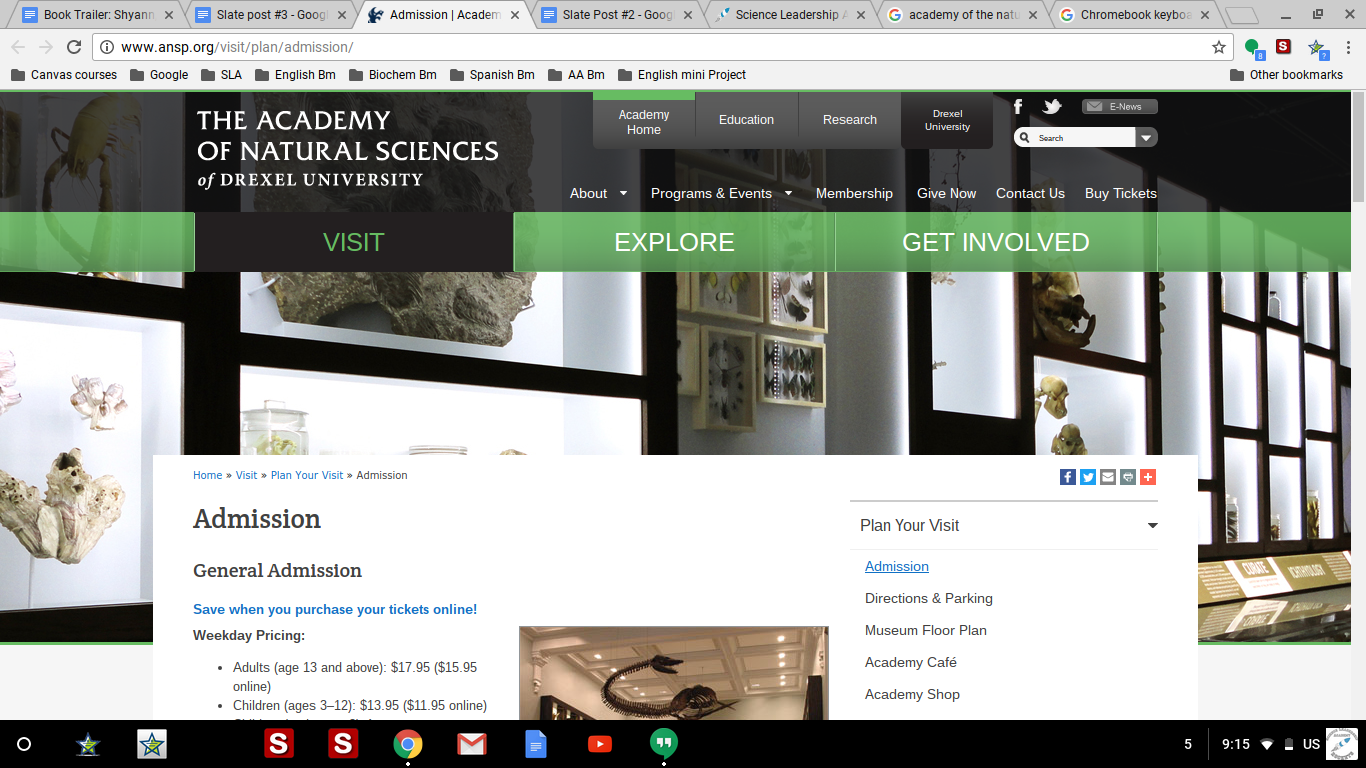 In the first picture, I’m searching on google museums that allow people to pay with their EBT card. I clicked on the first link that brought me to The Academy Of Natural Sciences of Drexel University admissions page. If you click on the picture and scroll down on the website, you’ll see that you can pay $2.00 for each person if you have an access card (EBT). Since 2011, the number of people who are using EBT cards has increased by 46 million people in the USA.
In the first picture, I’m searching on google museums that allow people to pay with their EBT card. I clicked on the first link that brought me to The Academy Of Natural Sciences of Drexel University admissions page. If you click on the picture and scroll down on the website, you’ll see that you can pay $2.00 for each person if you have an access card (EBT). Since 2011, the number of people who are using EBT cards has increased by 46 million people in the USA.
In Blog post #1, I talked about what deep poverty is. Deep poverty is when someone is living under the income of $6,000. For new viewers, you might be wondering what’s the difference between deep poverty and poverty. The difference between the two is that you would have to be making under $20,000 a year to be considered living in poverty, whereas to be considered living in deep poverty, you’d have to be making under $6,000 a year. Something I said in the last blog post that surprised me was that even though Philadelphia has the highest number of people who are living in deep poverty within the Nation’s most 10 populous cities, it has a low range of homeless people living on the streets. About half the people living in poverty are living in deep poverty.
In Blog Post #2, I talked about what I did for my original research plan. I interviewed a 26 year old African American woman. The conversation in the interview talked about her personal experiences and how she felt about things. I started off the interview by saying my name and what the interview was about; Kyla Gladney-Enos and deep poverty. I then told the time and the date; 7:19 PM on May 5, 2017. I asked her simple questions like, “How long have you lived in deep poverty and what was your experience like?” The lady answered since she was 16. Her original words were, “Umm, I’ve been living in deep poverty since I was about 16. It’s kind of hard, but if you know how to make it work, then it’s not as hard as you think it is.” I asked her another question like, “Did you ever experience hunger? If so, how did you manage paying your bills and feeding yourself? If not, what did you do to help yourself not be hungry?” She basically said she has experienced hunger, but she knows how to manage her bills.
 &
& 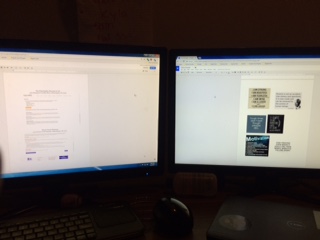 These pictures show my google doc of the resources I found. I did this because it made it easier to keep track of everything that interested me while researching different things.
These pictures show my google doc of the resources I found. I did this because it made it easier to keep track of everything that interested me while researching different things.
For this blog post, I’m going to be talking about the change I made for the lady I interviewed. For my Agent of Change I made a care package for the lady I interviewed. In the care package I included things I think will help her. I included a lot of museum admission information in the care package because if she shows her access card, she’ll get to pay $2.00 to get in. Plus, she has little kids. When I was a kid, I remember going to a lot of cool museums that educated me on little things. I decided to do this because I felt like it would be more effective for me to give someone in need a care package than to give a presentation to my classmates. I also put a map of free clinics in Philadelphia because after the interview, she told me a story about one of her family members, so I thought this would help. When I decided that a care package would be my agent of change, I felt like it wasn’t that hard of a task, but when I was completing it, it was mildly difficult to find museums for children in Philadelphia that allows people pay with their access card. I was effective in making this care package because I was creative and thoughtful when finding information. My creativity really came in hand when I was making the pouch to put the information in.
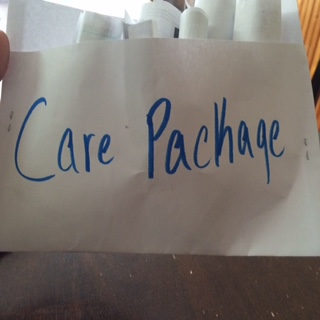 &
& 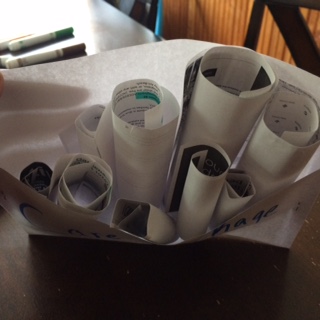 This is the final product of the care package. After I was sure what I wanted to put in the care package, I printed the pages out, cut each individual item up, and rolled it up to put in the little pouch.
This is the final product of the care package. After I was sure what I wanted to put in the care package, I printed the pages out, cut each individual item up, and rolled it up to put in the little pouch.
I felt really calm while completing this project. I wasn’t really stressed when it came close to the checkpoints because there was so much time to do each one. Usually with a benchmark, the deadlines are so close together that it gets so stressful, but with this project, there was a lot of time to complete checkpoints without feeling that stressed out. I learned that I didn’t know a lot about poverty. Like, I knew what it was and what it looked like, but I didn’t know the facts. I think I could have found more sources about poverty, because the more I know about something, the more I can understand it. For my project, there isn’t anything else to do. Some things people have done to raise awareness is asking their local community to give up one thing they enjoy (make-up, phones, food) on a particular day. Others have petitioned for a poverty reduction. I honestly think signing petitions and protesting is a good idea because when we fight for what’s right, it brings attention to the issue. Everyone will know about what’s going on if we protested about poverty. Thanks for tuning in, see you later!
(P. S. Check out my annotated bibliography for more information!)
